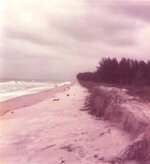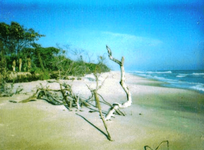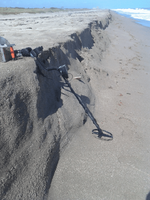bigscoop
Gold Member
- Jun 4, 2010
- 13,373
- 8,689
- Detector(s) used
- Older blue Excal with full mods, Equinox 800.
- Primary Interest:
- All Treasure Hunting
Trent was asking about this so I thought I'd start a thread concerning these storms so these new hunters will have a better idea of what to expect and how different storms can produce drastically different results. It's an overwhelming feeling sometimes to walk excitedly onto a big post-storm beach only to say, "Now what?" So anyone with any advice or pointers for these guys please feel free to chime in.
PS: I'll write up something on what little I know on the topic and post it a bit later.
PS: I'll write up something on what little I know on the topic and post it a bit later.
Amazon Forum Fav 👍
Last edited:
Upvote
0




 Down to bedrock. Targets fast and furious at the bottom of those cuts. As fast as you could dig, multiple targets per basket. You'll never return to dry sand hunting again when you've been in conditions like that! haha
Down to bedrock. Targets fast and furious at the bottom of those cuts. As fast as you could dig, multiple targets per basket. You'll never return to dry sand hunting again when you've been in conditions like that! haha



